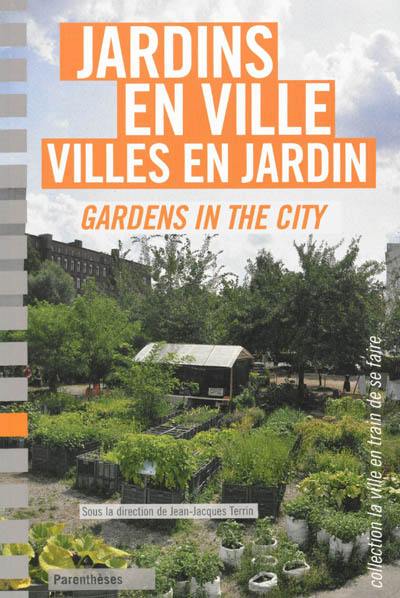
Fiche technique
Format : Broché
Nb de pages : 317 pages
Poids : 754 g
Dimensions : 17cm X 24cm
ISBN : 978-2-86364-233-7
EAN : 9782863642337
Jardins en ville, villes en jardin
Quatrième de couverture
Jardinier en ville n'est pas un phénomène nouveau. Dans le contexte de crise actuel, le jardin n'est plus simplement ornemental ou récréatif mais prend une dimension environnementale, sociale et économique, et ce à toutes les échelles de la métropole, de la plus petite cellule familiale au grand territoire métropolitain.
Délaissé urbain transformé en espace collectif cultivable à Amsterdam, aéroport reconverti en vaste espace public et pratique du maraîchage à Berlin, friche réaménagée sur un mode semi-naturel à Bruxelles, îlot jardiné à vocation festive et artistique à Lyon, réserve marécageuse favorisant la biodiversité à Nantes, parc naturel urbain à Strasbourg, jardin partagé géré selon un principe de démocratie participative à Toulouse, végétalisation pour l'amélioration du cadre de vie des habitants de logements sociaux à Paris : les divers exemples européens étudiés se présentent comme autant d'expressions de nouvelles attentes urbaines qui invitent à repenser les frontières entre espaces public et privé et à percevoir la nature comme un levier essentiel d'aménagement de la ville.
Gardening in the city is not a new phenomenon. Yet in this time of crisis, the garden is no longer simply ornamental and recreational ; it has taken on environmental, social and économic dimensions at every scale in the metropolis, from the smallest family unit to the entire urban area.
In Amsterdam, abandoned city plots are being transformed into community vegetable gardens ; in Berlin, an airport has been converted into a vast public space and market gardening is developing ; in Brussels, wasteland has been redeveloped as a semi-natural site ; and in Lyon, a city block garden is dedicated to festivities and art. In Nantes, there is now a wetland reserve that encourages biodiversity, Strasbourg has its natural urban park, and in Toulouse, a neighbourhood garden is managed according to the principles ofparticipatory democracy. In Paris, vegetation is being used to improve the living environment for the inhabitants of council flats. The many European examples studied in this volume are expressions of new urban expectations ; they invite us to re-examine the boundaries between public and private spaces and to consider nature as an essential driving force in city planning.





